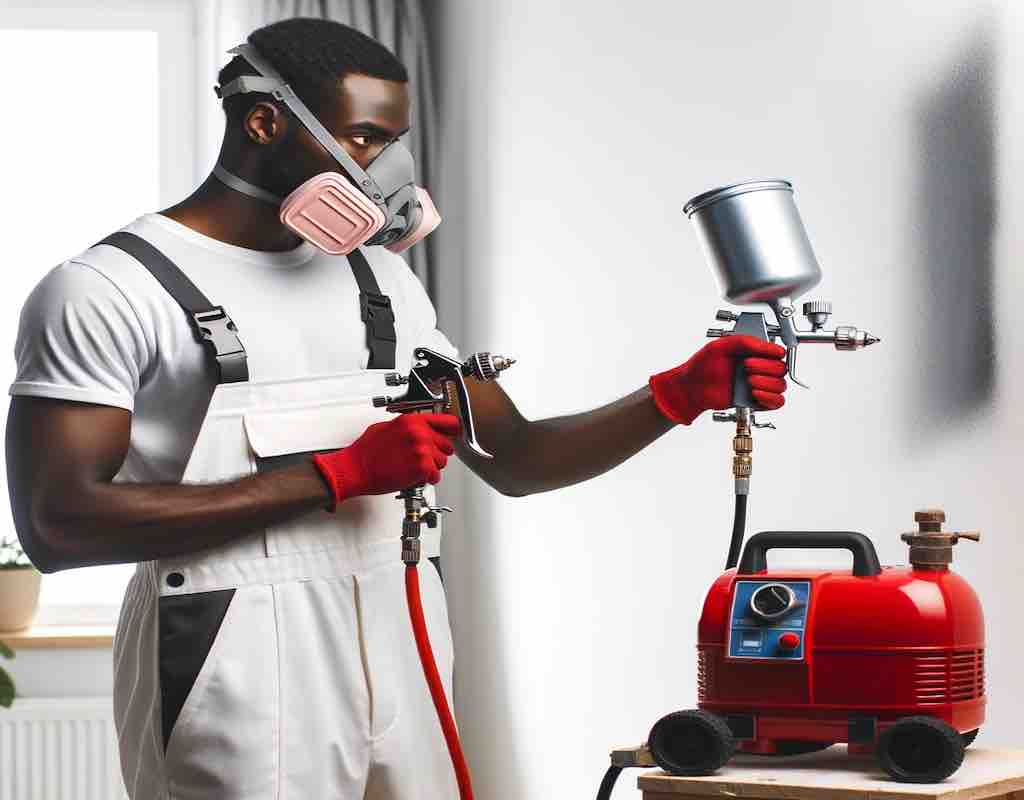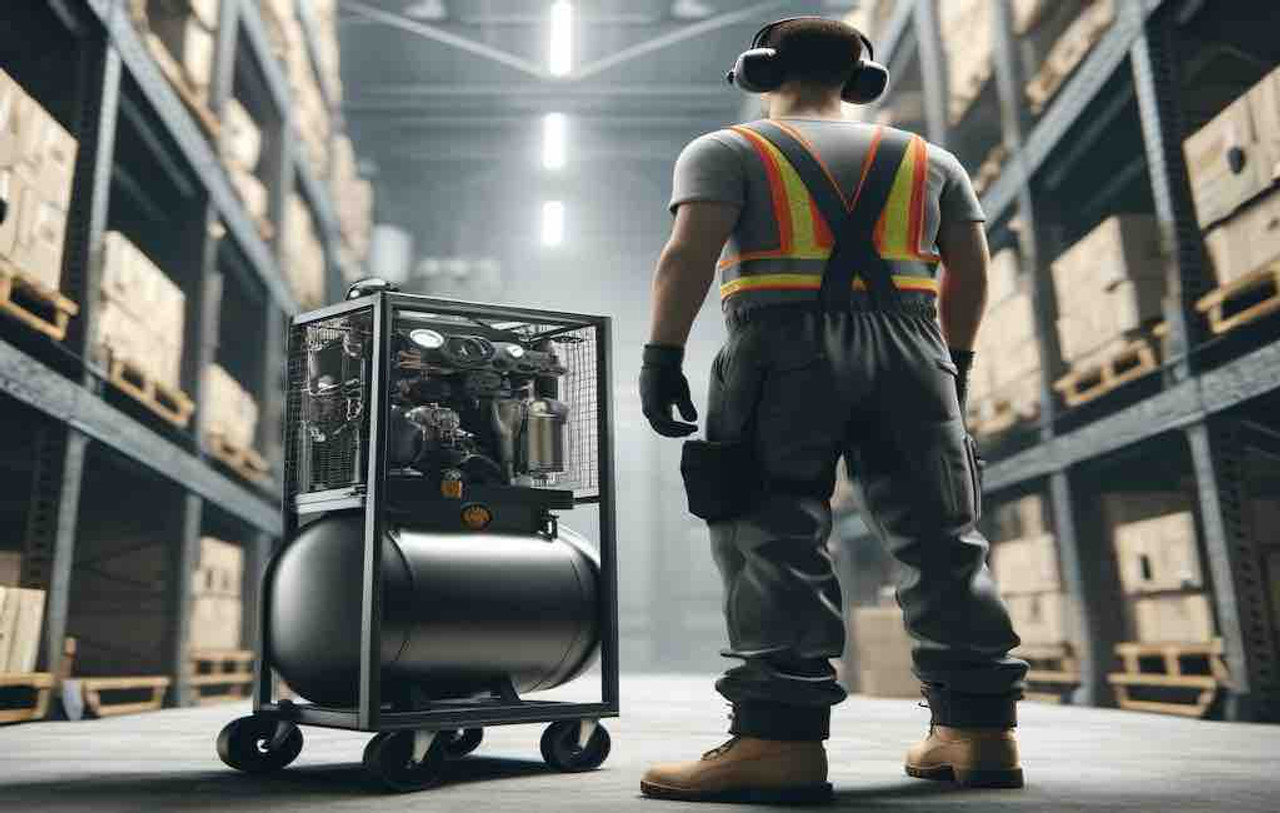Choosing the Right Air Compressor for Painting Projects
- Selecting the Right Compressor: To ensure a smooth, even application, choose an air compressor that matches your paint sprayer's CFM and PSI requirements.
- Types of Compressors: Consider quiet, oil-free compressors to avoid oil vapor contamination and reduce noise levels for painting projects.
- Proper Setup: Ensure all connections are secure and adjust pressure settings specifically for your painting task to achieve the best results.
- Maintenance Is Key: Regular maintenance, such as checking oil levels, cleaning filters, and draining moisture from the tank, extends the life of your compressor and maintains paint quality.
- Product Recommendations: For various needs—from small DIY projects to professional applications—products like California Air Tools, DeWalt Pancake, and Industrial Air Tools compressors provide reliable choices.
- Safety and Efficiency: Using the correct air compressor improves the efficiency of painting projects and enhances safety by reducing the risk of equipment malfunction.
- Expert Advice Available: For tailored recommendations and to explore a comprehensive range of air compressors suitable for painting, consult experts at Tend Industrial Supplies.
- CFM (Cubic Feet per Minute) Requirements: CFM refers to the volume of air that the compressor can produce. For painting tasks, it's crucial to have a compressor that delivers enough CFM to meet the demands of the paint sprayer. Generally, paint sprayers require higher CFM ratings compared to other tools.
- PSI (Pounds per Square Inch) Ratings: While CFM measures the quantity of air, PSI measures the pressure at which it is delivered. Most painting applications don't require highly high PSI, but it is essential to ensure that the compressor can deliver consistent pressure to avoid uneven layers of paint.
- Size of the Tank: A larger tank size is beneficial for continuous painting as it allows you to spray longer without the compressor needing to cycle on and off frequently. This is particularly important in large-scale painting projects to maintain a consistent finish.
- Noise Level: Especially for indoor painting jobs or in residential areas, the noise level of the compressor can be a significant consideration. Quieter compressors enhance the working environment and reduce noise pollution.
- For Auto Body Work: Look for a compressor with high CFM and PSI capabilities to handle high-volume spray guns. Auto painting requires precision, so a steady air supply is crucial.
- Home Renovation Projects: A medium-sized, portable air compressor usually suffices for home renovation tasks, including furniture painting and wall spraying. Opt for a model that balances mobility with sufficient power.
- Industrial Applications: Industrial painting projects demand robust compressors with large tanks and high CFM and PSI ratings to ensure continuous operation and to accommodate multiple spray guns.
- Connect Properly: Ensure all connections are secure, including the hose from the compressor to the spray gun. Use high-quality connectors and hoses to minimize leaks and maintain consistent pressure.
- Adjust Pressure Settings: Set the pressure according to the paint and sprayer requirements. Most spray painting requires lower PSI but higher CFM, so adjust accordingly to avoid over-spraying or uneven application.
- Test the Setup: Before starting your project, test the setup on scrap material to ensure the paint flows smoothly and the pressure is adequate.
- Daily Checks: Before each use, check for any signs of wear or leaks in the hoses and fittings. Ensure the air filter is clean to prevent contaminants from spoiling your paint finish.
- Regular Oil Checks: If using an oil-lubricated compressor, check the oil level regularly and change it according to the manufacturer’s recommendations.
- Drain the Tank: Drain any moisture from the tank after each use. This is crucial to prevent rust and corrosion, damaging the compressor and contaminating your paint.
- Best Overall Air Compressor for Painting Projects:
- California Air Tools Ultra Quiet Electric Air Compressor (5.5 Gallon): Known for its quiet operation and consistent airflow (5.3 CFM at 40 PSI), this model is ideal for most painting jobs. Its large tank allows for less frequent refills.
- Best Budget Air Compressor for Painting Projects:
- DeWalt Pancake Air Compressor (DWFP55126)
This pancake air compressor is a great choice for small painting projects or for those on a tight budget. It's lightweight and portable, making it easy to move around your workspace. It also features a 6-gallon tank and delivers 2.6 CFM at 90 PSI.
-
- Best High-Performance Air Compressor for Painting Projects:
This industrial-grade air compressor the California Air Tools 20020AD-22060 Ultra Quiet & Oil-Free Air Compressor appears to be a high-performance electric model well-suited for professional applications. Here's a quick summary:
- Electric & Oil-Free: Requires less maintenance compared to oil-lubricated models.
- Quiet Operation: Only 70 decibels, ideal for indoor use.
- Powerful: Delivers 5.3 CFM at 90 PSI for demanding tasks.
- Large Capacity: 20-gallon steel tank for extended use without refilling.
- High Voltage: Requires a 220-volt power source, not ideal for standard household outlets.
- What size air compressor do I need for painting cars?
- For automotive painting, look for a compressor that provides at least 9-12 CFM at 90 PSI to run HVLP spray guns effectively.
- Can I use a small air compressor to paint walls?
- Yes, smaller compressors with a capacity of around 6 gallons and 2-4 CFM can be used for painting walls with smaller spray guns or for touch-up jobs.
- What is the best type of air compressor for furniture painting?
- For furniture, a medium-sized compressor with 4-7 CFM at 40-60 PSI is ideal, providing enough power and control for detailed work.
- How often should I maintain my air compressor for painting?
- Perform daily checks and maintenance tasks after each use, with more thorough inspections and oil changes scheduled according to the manufacturer’s guidelines or after prolonged use.
- Are oil-free compressors better for painting?
- Yes, oil-free compressors are generally better for painting since they reduce the risk of oil vapors mixing with the paint, which can affect the finish quality.
The quality of the finish is paramount in painting projects, whether for auto body work, home renovation, or industrial applications. The air compressor is a crucial tool that significantly influences the outcome of your paint job. Selecting the suitable air compressor for painting is not just about purchasing any unit available; it involves understanding specific requirements that align with your painting needs. This guide provides detailed insights into choosing the perfect air compressor for various painting tasks, ensuring you achieve professional-grade results every time.
Understanding the Role of Air Compressors in Painting
Air compressors are pivotal in operating paint sprayers. They provide the necessary power to atomize paint into fine particles, ensuring a smooth and even application. The type of compressor you choose affects the finish quality, the speed of application, and overall efficiency in paint consumption and time.
Key Factors to Consider When Choosing an Air Compressor for Painting:
Selecting the Ideal Air Compressor for Different Painting Jobs

Different painting projects require specific types of air compressors. Here’s how to select based on the project type:
Best Air Compressor Brands for Painting
When shopping for an air compressor, it is wise to consider reputable brands known for their reliability and efficiency in painting applications. Brands like DeWalt, Makita, and Ingersoll Rand offer highly rated models for painting due to their consistent performance and durability.
By understanding these key aspects and how they apply to your specific painting needs, you can choose an air compressor that will provide a flawless finish and operate efficiently. Whether you’re a professional painter or a DIY enthusiast, the right air compressor is vital to your painting arsenal.
Setting Up and Maintaining Your Air Compressor for Optimal Painting Performance
Once you have selected the right air compressor for your painting projects, setting it up correctly and maintaining it properly are key steps to ensuring it performs optimally and lasts long. Proper setup and regular maintenance can prevent downtime and costly repairs, ensuring your painting projects proceed smoothly.
Setting Up Your Air Compressor for Spray Painting
Setting up your air compressor correctly is critical to achieving a good finish. Here’s how to set up your air compressor for spray painting:
Maintaining Your Air Compressor for Painting
Regular maintenance is crucial to keep your air compressor in top condition for painting:
Best Air Compressors for Painting Projects
Choosing the suitable air compressor for your painting project depends on several factors, including size and complexity, the type of paint you'll use, and your budget. Here are some top picks:
Best Overall Air Compressor for Painting Projects:
California Air Tools Ultra Quiet Electric Air Compressor (5.5 Gallon)
This air compressor is a great all-around option for painting projects. It's relatively quiet, oil-free, and delivers a consistent flow of air at 5.3 CFM at 40 PSI. It also features a large 5.5-gallon tank, which means you won't have to wait as often for the tank to refill between spraying.
Conclusion: Ensuring Quality and Efficiency in Painting Projects
By understanding the specific needs of your painting projects and choosing the right air compressor, you can greatly enhance the quality and efficiency of your work. Remember, the key to successful painting projects lies not just in the painter's skills but also in the quality of the tools used.
FAQs About Air Compressors for Painting
Call to Action
For further assistance in selecting the perfect air compressor for your painting needs or to explore a range of high-quality compressors, visit Tend Industrial Supplies attendsupplies.com. Our experts are ready to help you find the best tools to ensure your painting projects are successful. Contact us at sales@tendsupplies.com for personalized advice and solutions.
Disclosure:We may earn a commission if you purchase through one of our affiliate links. This helps support tendsupplies.com and allows us to continue creating informative content for you. Clicking on these links does not cost you anything extra; it helps us keep bringing you valuable information.
Related Articles
Understanding the Right Size of Air Compressor for Your Air Tools
How to Choose the Perfect Air Compressor for Your
Selecting the Right Air Compressor
Portable Air Compressors for On-the-Go Projects: Mobility.
2024's Leading Air Compressors: Comprehensive Reviews
Selecting the Right Air Compressor: Powering Up Your Pneumatic Projects
Innovative Features in Modern Air Compressors: Revolutionizing Compressed Air Systems
High-Pressure Air Compressors Explained: Powering Demanding Applications








